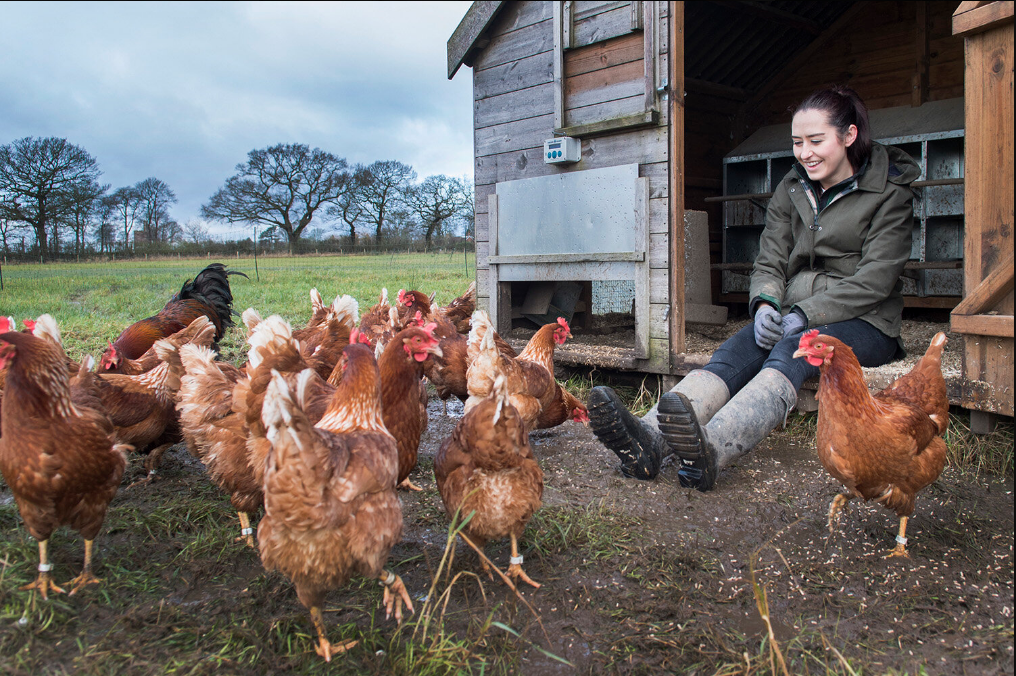“Giving up meat, eggs and dairy blinds us to the need of diversify what we eat - so long as it’s sustainably grown.”
“A chef revealed this week that a customer asked for her steak to be well-done as she was a vegetarian. It seems to be the latest example of ignorance by those supposedly giving up meat, eggs and dairy products for January as part of the veganuary movement. More than 750,000 people in 192 countries have signed up for 31 days of veganism, often with little idea what it entails and perhaps just thinking it’s easier than dry January.
The majority say that they are doing it for their health, to help animals and to preserve the environment. Chains such as Greggs, KFC, McDonald’s, Pizza Hut, Subway and Wagamamas have given would-be vegans meat-free nut burgers and watermelon steaks to help them through the darkest month. The Duke Of Edinburgh’s Award has suggested that learning to cook a vegan meal should become an essential skill.
But veganism isn’t necessarily the answer and could actually harm as well as heal. We have all become confused about green issues and how to save our planet. The OCR exam board is about to launch a new natural history GCSE, which is encouraging if it teaches children how to identify plants, trees and animals (only half of schoolchildren can identify a stinging nettle and one in 20 adults think potatoes grow on trees) but contentious if it preaches the increasingly fashionable narrow, meat-free message.
Eating animal produce isn’t wrong; what matters is making sure we farm sustainably and ethically, and look after animals and land. Children should learn about seasonal produce as well as eat less, conserve more and protect the countryside.
If you are getting through this month on vegan pasties, asparagus soup or coconut milk lattes, you might well be consuming ingredients that have been flown halfway around the world and have been sprayed with pesticides harmful to insects, birds and wildlife. Unless you grew the tomatoes in your salad yourself, they were probably raised in hothouses requiring vast amounts of energy to heat. The craze for almond milk has had a terrible impact on bees.
According to commercial bee operators in America, 50 billion died in 2018-19 when they were rented out to pollinate California’s groves. Our land isn’t being destroyed just by over-grazing but by monocultures.
Last year’s award-winning documentary ‘The Biggest Little Farm’ is this generations ‘The Good Life’ . The Californian farm, which used to grow a monocrop of avocados, had become barren and disease-ridden. There were dead insects, dried-up irrigation ponds and shrivelled trees until John and Molly Chester arrived and re-wrote the rules.
He said: “You need animals for a farm to be healthy.” They introduced chickens, pigs, cows, sheep, 75 varieties of stone fruit, clover, radishes, peas and root vegetables. Meanwhile, they abandoned hormones and synthetic fertilisers. When snails overwhelmed them they brought ducks in to keep their numbers down. The farm became complex and diverse. It’s rich and fertile soil, combined equally varied fauna, flora and animals, thrived and helped it to survive the worst Californian drought in centuries. They may have abandoned intensive farming but the work required to keep it going was just as intense. Now, 60 volunteers help out and all the produce is sold locally. Ten years after they started, they are in profit while the surrounding area is littered with abandoned battery farms. No wonder other farmers want to copy their methods.
In Britain, Isabella Tree’s book ‘Wilding’ is having the same effect. It describes an attempt to renew the ecosystem after decades of intensive agriculture on the family’s 1,400 - hectare estate in West Sussex turned it into a wasteland. Starting in 2010 they brought in Exmoor ponies, longhorn cattle, red deer and Tamworth pigs. Both scrubland and wetland have now reappeared alongside the nightingales and turtle doves. The soil has been revitalised and they have a thriving business selling organic meat and veg.
Farms should become as diverse as our diet. Farmers should focus on feeding the local population and children should be encouraged to get involved. Schools often had beehives and allotments until 1970’s. Greenbelt land, rather than vast hydroponics warehouses, could provide more produce for towns. The same goes for animal husbandry. Rather than intensively breed chickens, pigs and cattle for export - which often entails cramped, cruel living conditions - farmers should focus on smaller scale production to cater to more local suppliers. If animal welfare standards rise, farmers may find fewer people give up meat in favour of a vegetarian or vegan diet.
The government has suggested in its new agriculture bill that farmers will be rewarded if they pursue ways of enriching the land through crop and livestock diversification. It’s a welcome step away from rewarding vast, industrial monocrop farming that has done so much to despoil the countryside and reduce the number and variety of birds and other wildlife. But consumers will also need to play their part in renewing our relationship with food. Eating your way through dozens of imported Mexican avocados in January isn’t going to save the planet but munching your way through local pork and turnip stew, however unfashionable, might. 75 years after ‘Animal Farm’ was published it doesn’t have to turn into Vegan Allotment or Laboratory Lettuce but the countryside could finally become a rural idyll.”
Alice has some controversial things to say, but I actually went to see ‘The Biggest Little Farm’ about 2 weeks ago and the ethos behind their farm really stuck with me. Farming In Harmony With Nature. This is, in our eyes definitely the way forward. And although we only have 16 acres of land, we’re aiming to farm as naturally as possible. We’ve already got our mixed fruit orchard planted and have our 10 beehives up and running. This summer we are growing all our own vegetables and hopefully will be able to offer these to locals that come and collect our pasture fed hens, free range eggs. If you get the opportunity, you should try and watch the film.














